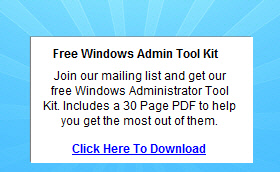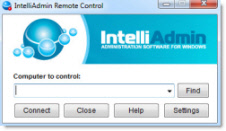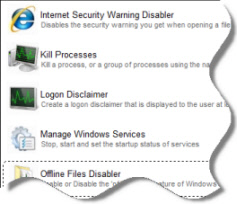Found the problem:
I did copy the base64-encoded content of the SecurityFile into a new created file instead of the file itself, because I had trouble with file access to a shared resource. The encoding of the file seem to be important. If someone from Microsoft reads this: you may think about fixing the import to not depend on the original file, but only on the base64-encoded content ... otherwise you could use binary files, so that nobody will even think about using the text-content.
- Marked as answer by Sven Erik Matzen Wednesday, January 19, 2011 9:19 AM
Found the problem:
I did copy the base64-encoded content of the SecurityFile into a new created file instead of the file itself, because I had trouble with file access to a shared resource. The encoding of the file seem to be important. If someone from Microsoft reads this: you may think about fixing the import to not depend on the original file, but only on the base64-encoded content ... otherwise you could use binary files, so that nobody will even think about using the text-content.
- Marked as answer by Sven Erik Matzen Wednesday, January 19, 2011 9:19 AM
Found the problem:
I did copy the base64-encoded content of the SecurityFile into a new created file instead of the file itself, because I had trouble with file access to a shared resource. The encoding of the file seem to be important. If someone from Microsoft reads this: you may think about fixing the import to not depend on the original file, but only on the base64-encoded content ... otherwise you could use binary files, so that nobody will even think about using the text-content.
- Marked as answer by Sven Erik Matzen Wednesday, January 19, 2011 9:19 AM
Found the problem:
I did copy the base64-encoded content of the SecurityFile into a new created file instead of the file itself, because I had trouble with file access to a shared resource. The encoding of the file seem to be important. If someone from Microsoft reads this: you may think about fixing the import to not depend on the original file, but only on the base64-encoded content ... otherwise you could use binary files, so that nobody will even think about using the text-content.
- Marked as answer by Sven Erik Matzen Wednesday, January 19, 2011 9:19 AM
Found the problem:
I did copy the base64-encoded content of the SecurityFile into a new created file instead of the file itself, because I had trouble with file access to a shared resource. The encoding of the file seem to be important. If someone from Microsoft reads this: you may think about fixing the import to not depend on the original file, but only on the base64-encoded content ... otherwise you could use binary files, so that nobody will even think about using the text-content.
- Marked as answer by Sven Erik Matzen Wednesday, January 19, 2011 9:19 AM
--
Kurt Roggen [BE] - MVP
Blog: http://trycatch.be/blogs/roggenk
"Sven Erik Matzen" wrote in message news:868e57f4-50da-41e5-9088-b376208a0fc3...Found the problem:
I did copy the base64-encoded content of the SecurityFile into a new created file instead of the file itself, because I had trouble with file access to a shared resource. The encoding of the file seem to be important. If someone from Microsoft reads this: you may think about fixing the import to not depend on the original file, but only on the base64-encoded content ... otherwise you could use binary files, so that nobody will even think about using the text-content.
I almost pull my hair off trying to do this same thing in SCVMM 2012 R2. I was even using the original SecurityFile, so no problems with encoding here, and then decided to use the IP address instead of the computer name, but the server always was unable to import the user credentials, and nothing seemed to work. Finally, i changed the random passphrase i had created, that included lower and uppercase characters and numbers, with another passphrase which included lowercase characters, dots and numbers, and then it worked.
It's really a pity that after so many years of developments in computing, the software still has mysterious error codes that bring no information at all to solve the problem.
- Edited by frapetti 15 hours 28 minutes ago
I almost pull my hair off trying to do this same thing in SCVMM 2012 R2. I was even using the original SecurityFile, so no problems with encoding here, and then decided to use the IP address instead of the computer name, but the server always was unable to import the user credentials, and nothing seemed to work. Finally, i changed the random passphrase i had created, that included lower and uppercase characters and numbers, with another passphrase which included lowercase characters, dots and numbers, and then it worked.
It's really a pity that after so many years of developments in computing, the software still has mysterious error codes that bring no information at all to solve the problem.
- Edited by frapetti Friday, July 10, 2015 3:44 PM
I almost pull my hair off trying to do this same thing in SCVMM 2012 R2. I was even using the original SecurityFile, so no problems with encoding here, and then decided to use the IP address instead of the computer name, but the server always was unable to import the user credentials, and nothing seemed to work. Finally, i changed the random passphrase i had created, that included lower and uppercase characters and numbers, with another passphrase which included lowercase characters, dots and numbers, and then it worked.
It's really a pity that after so many years of developments in computing, the software still has mysterious error codes that bring no information at all to solve the problem.
- Edited by frapetti Friday, July 10, 2015 3:44 PM
I almost pull my hair off trying to do this same thing in SCVMM 2012 R2. I was even using the original SecurityFile, so no problems with encoding here, and then decided to use the IP address instead of the computer name, but the server always was unable to import the user credentials, and nothing seemed to work. Finally, i changed the random passphrase i had created, that included lower and uppercase characters and numbers, with another passphrase which included lowercase characters, dots and numbers, and then it worked.
It's really a pity that after so many years of developments in computing, the software still has mysterious error codes that bring no information at all to solve the problem.
- Edited by frapetti Friday, July 10, 2015 3:44 PM
I almost pull my hair off trying to do this same thing in SCVMM 2012 R2. I was even using the original SecurityFile, so no problems with encoding here, and then decided to use the IP address instead of the computer name, but the server always was unable to import the user credentials, and nothing seemed to work. Finally, i changed the random passphrase i had created, that included lower and uppercase characters and numbers, with another passphrase which included lowercase characters, dots and numbers, and then it worked.
It's really a pity that after so many years of developments in computing, the software still has mysterious error codes that bring no information at all to solve the problem.
- Edited by frapetti Friday, July 10, 2015 3:44 PM
I almost pull my hair off trying to do this same thing in SCVMM 2012 R2. I was even using the original SecurityFile, so no problems with encoding here, and then decided to use the IP address instead of the computer name, but the server always was unable to import the user credentials, and nothing seemed to work. Finally, i changed the random passphrase i had created, that included lower and uppercase characters and numbers, with another passphrase which included lowercase characters, dots and numbers, and then it worked.
It's really a pity that after so many years of developments in computing, the software still has mysterious error codes that bring no information at all to solve the problem.
- Edited by frapetti Friday, July 10, 2015 3:44 PM


